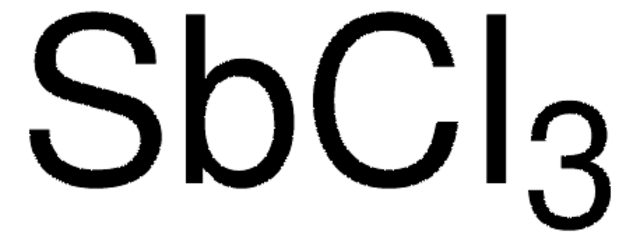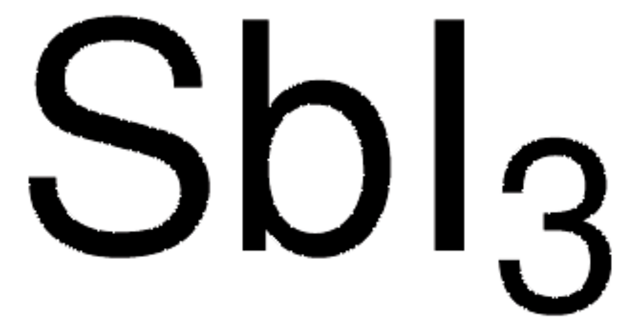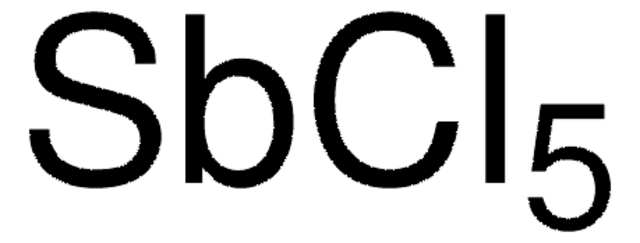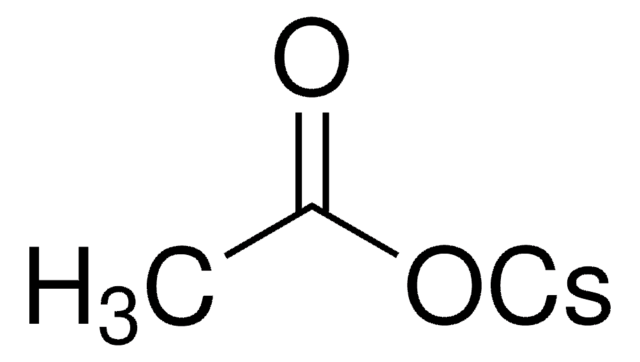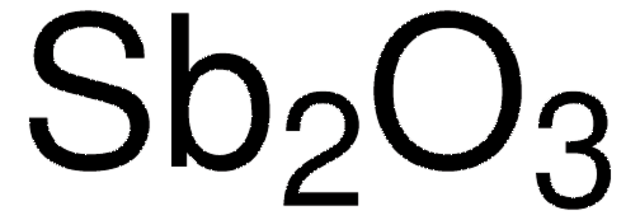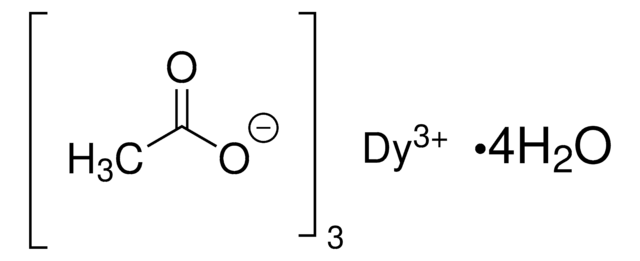483265
Antimony(III) acetate
99.99% trace metals basis
Synonyme(s) :
Antimony acetate, Antimony triacetate, Triacetoxystibine
About This Item
Produits recommandés
Niveau de qualité
Essai
99.99% trace metals basis
Forme
solid
Pertinence de la réaction
core: antimony
reagent type: catalyst
Pf
126-131 °C (lit.)
Densité
1.22 g/mL at 25 °C (lit.)
Chaîne SMILES
CC(=O)O[Sb](OC(C)=O)OC(C)=O
InChI
1S/3C2H4O2.Sb/c3*1-2(3)4;/h3*1H3,(H,3,4);/q;;;+3/p-3
Clé InChI
JVLRYPRBKSMEBF-UHFFFAOYSA-K
Catégories apparentées
Description générale
Application
- New Complexes of Antimony(III) with Tridentate O,E,O-Ligands: Explores new antimony(III) complexes providing insights into their bonding and potential applications in materials science (U Böhme, M Herbig, 2023).
- Antimony (III) acetate as a catalyst for synthesis of xanthenes: Details the use of antimony(III) acetate as a catalyst in the synthesis of biologically active compounds, showcasing its efficiency in organic chemistry (F Hakimi, A Hassanabadi, 2015).
Caractéristiques et avantages
- 99.99% trace metals basis (<150 ppm) ensures minimal contamination with consistent performance in critical applications, leading to better outcomes.
- Suitable catalyst to produce synthetic fibres. It is moderately soluble in water
- Suitable for solvent free reactions.
Mention d'avertissement
Warning
Mentions de danger
Conseils de prudence
Classification des risques
Acute Tox. 4 Inhalation - Acute Tox. 4 Oral - Aquatic Chronic 2
Code de la classe de stockage
11 - Combustible Solids
Classe de danger pour l'eau (WGK)
WGK 2
Point d'éclair (°F)
Not applicable
Point d'éclair (°C)
Not applicable
Faites votre choix parmi les versions les plus récentes :
Déjà en possession de ce produit ?
Retrouvez la documentation relative aux produits que vous avez récemment achetés dans la Bibliothèque de documents.
Les clients ont également consulté
Global Trade Item Number
| Référence | GTIN |
|---|---|
| 483265-100G | 4061832389943 |
| 483265-500G |
Notre équipe de scientifiques dispose d'une expérience dans tous les secteurs de la recherche, notamment en sciences de la vie, science des matériaux, synthèse chimique, chromatographie, analyse et dans de nombreux autres domaines..
Contacter notre Service technique